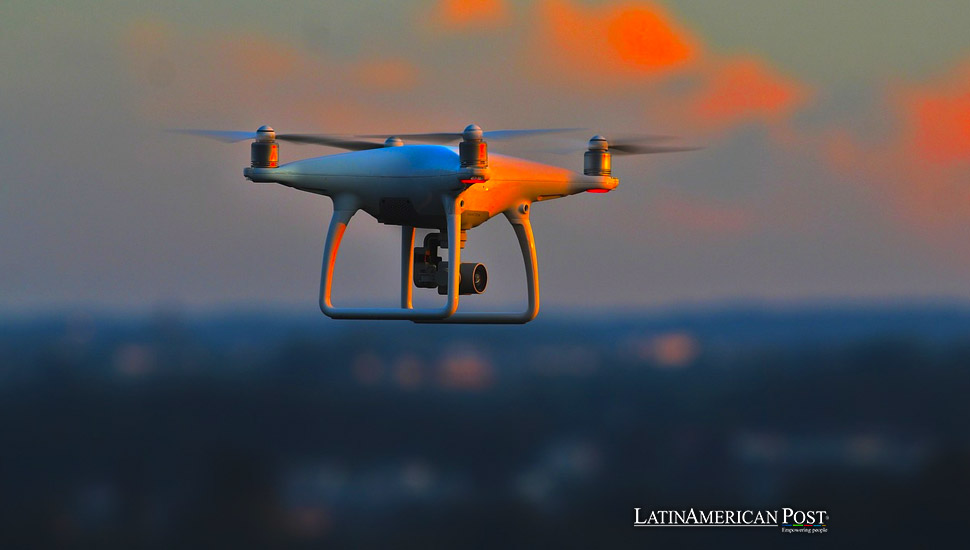Mexico’s Disappeared: Technology and Hope in the Search for Mass Graves

With over 114,000 people missing, Mexico is struggling to locate its disappeared. A group of scientists is employing cutting-edge technology, such as drones and hyperspectral imaging, to assist in the search for clandestine graves. Their efforts shed light on a growing crisis.
Mexico, a nation rich in culture and history, is also plagued by a painful legacy of violence and disappearance. According to Wired, more than 114,000 people have gone missing, and the country is riddled with clandestine mass graves—an undeniable symbol of the horrors faced by many. While Mexico grapples with this grim reality, a group of scientists from the Centro de Investigación en Ciencias de Información Geoespacial (CentroGeo) is taking an innovative approach. Their mission is to apply technology, data analysis, and remote sensing to help find the missing.
One of the leaders in this effort, José Luis Silván, is a geographer at CentroGeo. “I never thought I’d be working on this, but if this knowledge can help, now is the time to show it,” Silván told Wired in an interview. Initially focused on using satellite data to study biomass and human populations, Silván and his colleagues are now investigating the potential of drones and hyperspectral cameras to detect clandestine graves—an application of science that could provide much-needed answers to families desperate for closure.
Silván and researcher Ana Alegre emphasized in a recent article in the International Journal of Forensic Science and Criminology that understanding the geographic environment is critical to comprehending crimes like disappearances. “Mexico, with its diverse climate and geography, offers an opportunity for research to develop new detection methods,” they wrote. From deserts to forests, no ecosystem in the country has been spared from the horrors of clandestine burials.
The Search for Graves: Combining Science and Determination
Between 2020 and 2022, Mexican media reported that at least one illegal burial site was found in every state. Locating these graves is an immense challenge, requiring optimizing all available resources and information. Wired reports that the scientists at CentroGeo have systematically evaluated remote sensing tools—drones, satellite imagery, and more—to detect burial patterns and improve their search techniques.
But despite technological advances, much of the work remains manual, often led by family members of the disappeared. In 2023 alone, 10,315 disappearances were reported, with an average of 29 people vanishing every day. States like Jalisco, Tamaulipas, and Veracruz are among the most brutal hit, while civil society has stepped up without effective governmental intervention. According to Red Lupa, over 300 search collectives have been formed since 2007, many of them composed of family members who brave dangerous conditions to search for their loved ones.
One such group, Unidos por nuestros desaparecidos, operates in Baja California, a state rife with disappearances. A member, who wished to remain anonymous, described to Wired how they use simple tools—like long, pointed rods—to search for graves. “We insert the rod where we suspect the earth has been disturbed, pull it out, and smell it. If there are bones or tissues, you can tell by the smell. It’s a strong scent that is easy to detect and smells like decomposing organic matter.”
While some groups have experimented with technologies like ground-penetrating radar (GPR), many have found them less effective. “The radar would alert us to everything from metal cans to bottle caps,” the same source explained. After multiple false alarms, they returned to their more straightforward methods, though drones remain in use by other collectives.
The Role of Technology in Finding the Disappeared
Technology, particularly remote sensing, has been instrumental in advancing the search for mass graves. Wired reports that scientists at CentroGeo began experimenting with hyperspectral cameras in 2016. This technology captures a vast array of light wavelengths, including those invisible to the human eye, making it ideal for detecting disturbances in the soil that could indicate graves.
CentroGeo’s team even experimented with Morelos, burying seven pigs and monitoring the soil with hyperspectral cameras over six months. The data revealed that such technology could detect burial sites. Still, it only proved effective within three months of the burial—a limitation that prompted them to seek more affordable and accessible alternatives, like multispectral cameras.
While drones equipped with these cameras have shown promise, the broader application of these technologies in Mexico has faced bureaucratic hurdles. Even so, some success stories have emerged. For example, Wired notes that CentroGeo collaborated with the Comisión de Búsqueda de Personas Desaparecidas de Jalisco (COBUPEJ), which has acquired multispectral imaging equipment to support searches.
In addition to using hyperspectral and multispectral imaging, researchers have turned to the environment itself for clues. Decomposing bodies release nutrients like nitrogen into the soil, affecting the surrounding vegetation. The team has developed models to identify areas where clandestine graves might be located by studying satellite images that track changes in plant chlorophyll levels. While not definitive, this method has been employed in several search efforts, including Baja, California, which helped narrow potential search areas.
The Persistence of Families and the Role of Citizen Science
Beyond technology, the persistence of families searching for their loved ones has become a cornerstone of the fight against disappearances in Mexico. Collectives like Unidos por nuestros Desaparecidos often face life-threatening risks, yet they continue to organize searches based on tips, testimonies, or sheer determination. “We receive anonymous information and plan searches even if we have no specific leads,” the collective member explained to Wired.
In collaboration with civil society groups like Regresando a casa Morelos and Fuerzas Unidas por Nuestros Desaparecidos en Nuevo León (FUNDENL), the scientists at CentroGeo have created platforms to assist with searches. One such tool is Huellas de vida, a database that cross-references the belongings of unidentified bodies found in clandestine graves with reports of missing persons. This initiative, developed with support from the American Jewish World Service, aims to bring closure to families by matching data on personal effects found in graves with descriptions provided by families of the disappeared.
Despite the progress made, significant challenges remain. “There’s still a long way to go in evaluating the real contribution of geographic information to the discovery of crime scenes,” Silván told Wired. One of the biggest obstacles is the lack of feedback from authorities—search teams are often left in the dark about the results of their efforts. “Even with the National Commission, it’s hard to get any confirmation of where their discoveries have been made.”
A Future for the Missing
The disappearance crisis in Mexico is far from over, but technology integration offers a glimmer of hope. With advances in satellite imagery, drone technology, and geospatial analysis, there is now a greater chance of uncovering clandestine graves and providing answers to families who have spent years searching for their loved ones. Wired reports that in collaboration with organizations like COBUPEJ, researchers at CentroGeo are working on a book, Interpreting Nature to Find Them, detailing their findings and methods for detecting clandestine graves in Mexico.
As the scientific community continues to develop new tools and strategies, the families of the disappeared remain at the heart of the search efforts. Their determination and resilience, coupled with the support of scientists and civil society groups, may one day lead to the resolution of Mexico’s disappearance crisis. Until then, the search continues, driven by the hope of finding those lost in the shadows of violence and corruption.
Also read: Mexico and Brazil: Global Leaders in Metal Foundry Industry
While technological advances are crucial, they must be combined with a government commitment to invest in systematic search efforts and provide families with the closure they so desperately seek. As Wired’s report highlights, the power of citizen science and cutting-edge technology can change the course of this tragic chapter in Mexico’s history.




